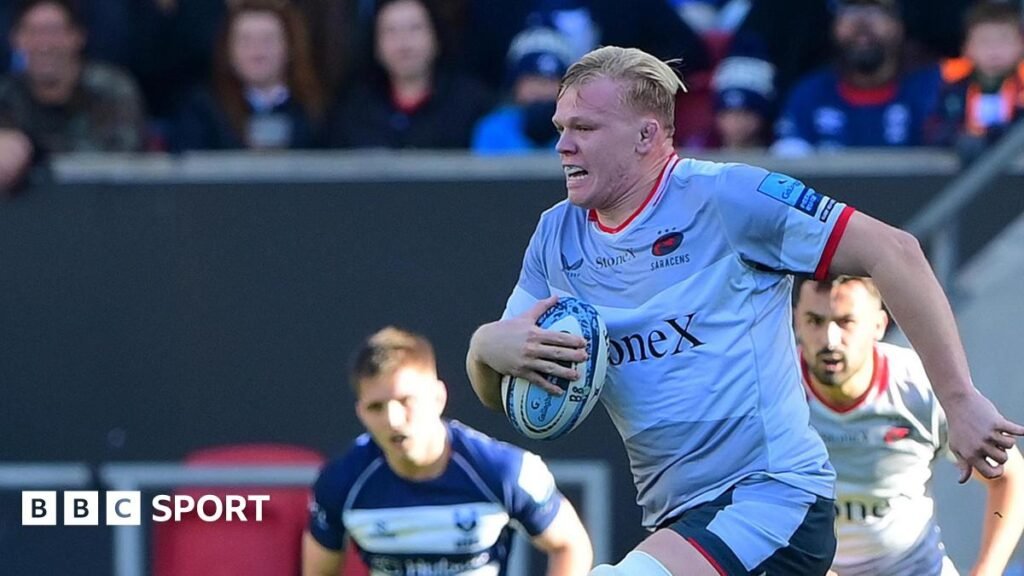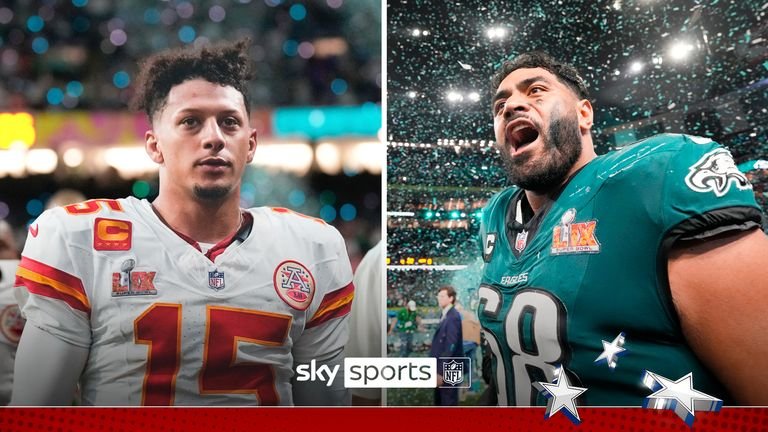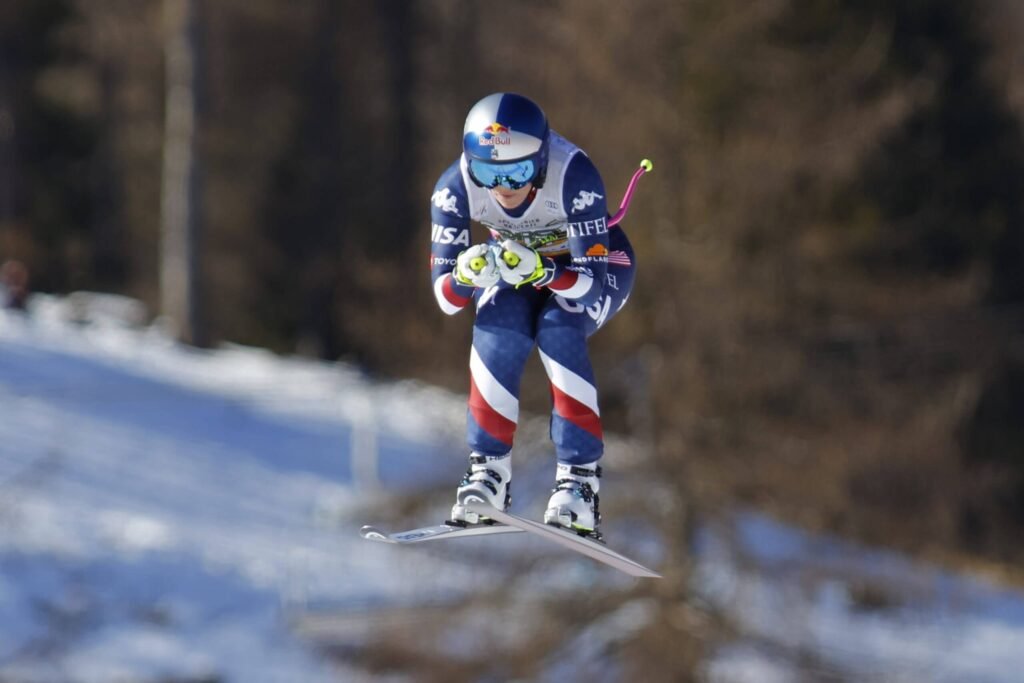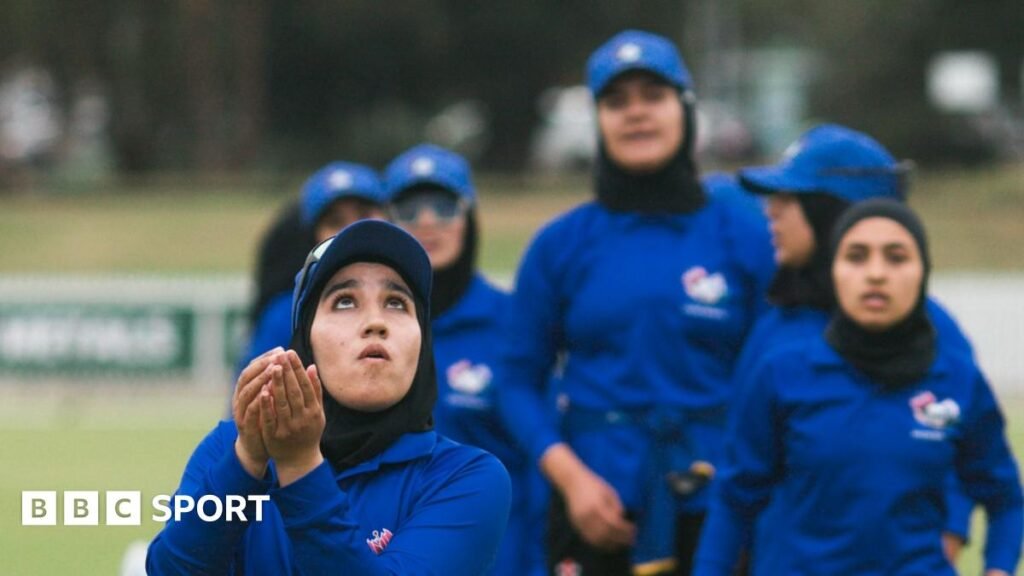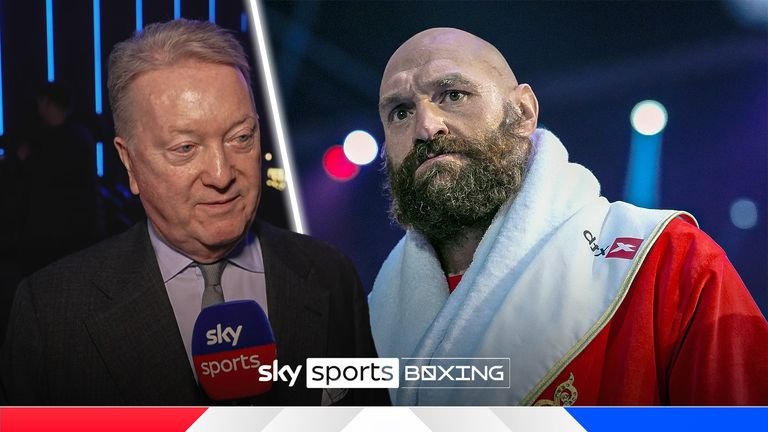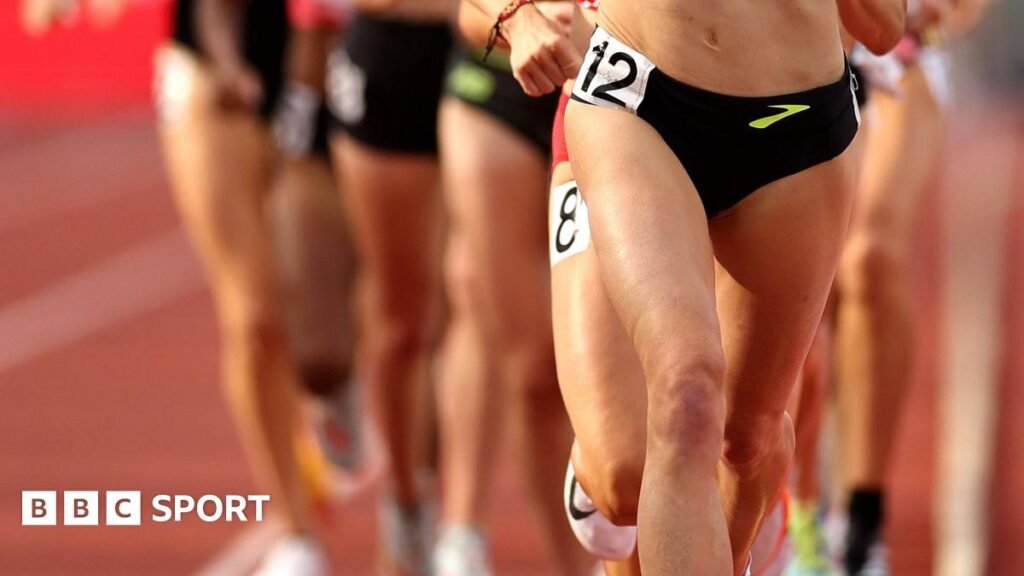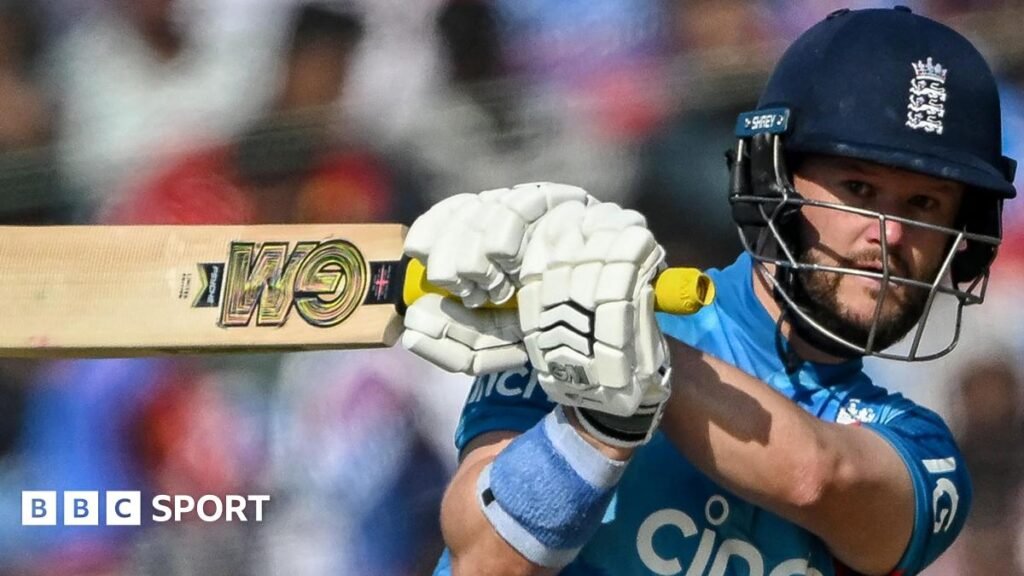-

Ryan O’HanlonFeb 11, 2025, 08:00 AM ET
Close- Ryan O’Hanlon is a staff writer for ESPN.com. He’s also the author of “Net Gains: Inside the Beautiful Game’s Analytics Revolution.”
Arguments: they are the toxic, yet infinitely renewable energy source that powers the global soccer economy. If you look hard enough, you can find someone, somewhere, arguing just about anything.
My favorite was probably when Thomas Rongen — the former head scout for the U.S. men’s national team and the former coach of American Samoa who was played by Michael Fassbender in the film “Next Goal Wins” — claimed that Lionel Messi had an “average soccer IQ.” There was also Andy Gray’s famous suggestion that Messi would struggle if he had to play games on a cold night … against Stoke City.
Stray further afield from pundits and former employees of the U.S. Soccer Federation, and you’ll find claims that will make you wonder if you’re seeing the very fabric of our reality being torn apart before your eyes. Things like, I don’t know, “Is that guy who comes off the bench for an MLS team actually better than the USMNT starter who plays in the Champions League?” Heck, analytically minded people like myself have spent the past decade wondering if Real Madrid, winners of five of the past nine Champions League titles, are really that good.
In small part, this is all driven by how hard soccer is to understand and how the global competitive landscape makes it difficult to contextualize any one team or player’s performance. We scream about how that bad player is actually good or the good team is actually bad — and on and on.
But how about we try to be a little more specific? Rather than telling you who I think the best player in the Premier League is — it’s actually Dwight McNeil — I’m going to take a page out of my colleague Matt Bowen’s playbook. Armed with a new, detailed, granular dataset provided by PFF FC, I’m going to try to identify the best (and worst) players in the Premier League at a bunch of specific skills.
The numbers don’t lie, so here is a list of the best — and worst — Premier League players in a multitude of different categories of skills.

 Fastest player: Erling Haaland, Manchester City
Fastest player: Erling Haaland, Manchester City
Using broadcast data, PFF FC is able to estimate a player’s top speed. To do so, they average out the fastest speed a player reached over his five fastest games. Haaland’s max speed this season is 35.59 kilometers per hour (22.11 miles per hour) — the fastest of any player.
At the NFL combine, they will also measure a player’s speed score — which is histime in the 40-yard dash, adjusted for his weight. Better to be big and fast than small and slow. Well, Haaland is nearly 200 pounds, and he’s the fastest player in the league.
 Slowest player: Casemiro, Manchester United
Slowest player: Casemiro, Manchester United
Just in case you were skeptical of this dataset: Casemiro’s max speed this season is 27.85 kilometers/hour (17.31 mph) — the slowest among all outfield players with at least 900 minutes.
In fact, a handful of goalkeepers, Bart Verbruggen, Robert Sánchez, David Raya, and Jordan Pickford, have all reached faster speeds than Casemiro so far this season. Raya and Pickford have also been faster than Casemiro’s crosstown midfield rival Ilkay Gündogan.
 Best shooter: Cole Palmer, Chelsea
Best shooter: Cole Palmer, Chelsea
Much like the company with the same name did for American football, PFF FC employs a team of people who grade every action a player takes over the course of a match. The grades are eventually normalized on a scale of 1-100, and so far this season, they’ve rated Palmer’s shooting at 99.5. In his two seasons with Chelsea, he has scored 5.5 goals more than his expected goals, and he has converted all 12 penalties he’s attempted.
 Best right-footed shooter: Alexander Isak, Newcastle United
Best right-footed shooter: Alexander Isak, Newcastle United
Palmer also grades out as the best shooter under pressure, the best shooter under no pressure, the best open-play shooter, and the best left-footed shooter. However, he’s scored every goal with his left foot so far this season. PFF FC grades Isak (93.9) as the best right-footed shooter in the league. He leads the Premier league with 12 right-footed goals from 9.4 expected goals, or xG.
 Best header in front of goal: Chris Wood, Nottingham Forest
Best header in front of goal: Chris Wood, Nottingham Forest
There’s no great way to say it. Headed shooter? Head shooter? We normally just say that “He headed the ball into the net.” But I’m not focused on heading in general — I want to know who is the best at directing the ball, with their skull, toward the opposition goal.
Wood, with a league-leading six headed goals from 2.9 xG, rates out as easily the best, uh, headed shooter of the season, at a 97.8.
 Best header, in general: Virgil van Dijk, Liverpool
Best header, in general: Virgil van Dijk, Liverpool
Now, Wood doesn’t even grade in the top 50 for aerial duels. Atop that list sits VVD, with a grade of 93.2. Across his Liverpool career, the Dutchman averages slightly over four aerial duels won per match, with a win-rate of 76%.
 Worst header, in general: Rasmus Højlund, Manchester United
Worst header, in general: Rasmus Højlund, Manchester United
Among players who have been rated on at least 90 aerial duels this season, Hojlund’s grade of 49.7 ranks him last. The 6-foot-3 center forward has won 24.2% of his aerial duels — the worst mark in the league for players with at least 90 attempts.
1:17
Ogden: Højlund has been let down by Man United’s recruitment
Mark Ogden blames Manchester United for not signing a senior striker to help Rasmus Højlund.
If there’s one defining move for Liverpool under manager Arne Slot — one that didn’t exist under Jurgen Klopp — it’s one of the defenders pinging a ball through the forward line into Gravenberch’s feet. Then, usually without even touching the ball, Gravenberch evades the oncoming midfield pressure, turns upfield, and pushes the ball into the attacking third.
Sure enough, Gravenberch has received the sixth-most line-breaking passes in the league this season. And he’s PFF FC’s highest-graded ball carrier, at 90.1.
 Slowest ball-carrier: Jérémy Doku, Manchester City
Slowest ball-carrier: Jérémy Doku, Manchester City
By most of the advanced metrics that quantify dribbling, Jeremy Doku might be the best dribbler in the world. His numbers for progressive carries, carries into the penalty area, and even things like possession value added from carries are all among the best, if not the very best.
However, despite numbers suggesting that Doku might be a world-class dribbler, he’s never been able to lock down a consistent spot in Manchester City’s starting XI. Why might that be? When he gets the ball, he holds onto it for, on average, 2.9 seconds. That’s way more than any other outfield player in the league — and it’s longer than multiple goalkeepers, too.
 Most one-footed player: Rico Lewis, Manchester City
Most one-footed player: Rico Lewis, Manchester City
This isn’t necessarily a bad thing. Some of the most one-footed players … play for Manchester City. Phil Foden uses his left foot 96% of the time — more than anyone else in the league. And Mateo Kovacic does the same with his right. But among players with at least 1,000 minutes played this season, Lewis, who uses his right foot 97% of the time, is the most one-footed.
 Most two-footed player: Georginio Rutter, Brighton
Most two-footed player: Georginio Rutter, Brighton
Rutter, who uses his right foot 41% of the time, just slightly edges out Bournemouth’s Antoine Semenyo, who uses his right foot 61% of the time, as the most balanced player in the league so far this season to play significant minutes.
In his 300-plus minutes for Manchester United, though, Jonny Evans has used both feet exactly 50% of the time.
 Best passer under pressure: Youri Tielemans, Aston Villa
Best passer under pressure: Youri Tielemans, Aston Villa
Not only has Tielemans attempted the most passes under pressure this season (575), but he’s also been the most effective. While Liverpool’s Curtis Jones has completed the highest percentage of passes under pressure (94%), that doesn’t really tell us much about the difficulty of the passes he’s trying to complete or what he should be trying to do in those moments. PFF FC’s graders should be taking that all into account and they rate Tielemans, 95.8, as the best overall passer under pressure.
 Worst passer under pressure: Victor Kristiansen, Leicester City
Worst passer under pressure: Victor Kristiansen, Leicester City
The Leicester fullback grades out as a 48.5 under pressure — worst in the league. But it feels unfair to pick on a player in a relegation battle. By those same grades, Nottingham Forest’s Murillo (49.9) and Arsenal‘s Jurriën Timber (51.1) are second- and third-from-bottom.
Playing against either of those teams? Perhaps those are the players you want to focus your press toward.
You don’t really need any data to back this up if you’ve ever watched him play, but this should do the trick. PFF FC tracks “passes over the top,” which are balls played over the backline and into space for a teammate to run onto. TAA has attempted five balls over the top per game, while no other player in the league is even attempting four.
 Best crosser: Lucas Digne, Aston Villa
Best crosser: Lucas Digne, Aston Villa
Thanks to his aggressive style, Alexander-Arnold racks up a lot of negatively graded plays, so none of his passing grades end up all that high. Instead, the highest graded crosser in the league this season is Lucas Digne, at 90.9. He rates third in pressured crossing, second in unpressured crossing, first in open-play crossing, and fifth in set-play crossing.
 Worst crosser: James Justin, Leicester City
Worst crosser: James Justin, Leicester City
I hate to keep picking on Leicester players, but the grading process does help highlight a weakness to their team: fullback play in possession. Among players with at least 20 graded crosses, Justin’s mark of 55.0 is last in the league. Right behind him, though, is Timber (55.6) again for Arsenal.
I hate to keep picking on Timber, who isn’t a bad player but rather not the greatest passer-under-presser or crosser of the ball. Among players with at least 80 graded events, Timber grades out in the top 15 of the league for tackling. Top of that chart, however, is Mitchell, at 90.2.
 Best runner: Sandro Tonali, Newcastle United
Best runner: Sandro Tonali, Newcastle United
Among all players to play at least 900 minutes, Tonali has maintained the highest average speed, 7.19 kilometers per hour, and covered the most ground per 90 minutes: 10.74 kilometers.
It’s funny to think back on how Tonali used to be compared to the languid pass-master, Andrea Pirlo. They’re both Italian, they both have long hair, they both play in midfield … and that’s about it.
 Best sprinter: Anthony Elanga, Nottingham Forest
Best sprinter: Anthony Elanga, Nottingham Forest
While Haaland has reached the fastest max speed, Elanga has spent more time sprinting than any other player in the league. PFF FC defines a sprint as any run that reaches at least 25 kilometers per hour (15.53 mph), and Elanga is the only player in the league who spends a full minute of every 90 minutes at sprint speed. He also averages more sprints, 29.72 per 90 minutes, than anyone else in the league.
 Most aggressive presser: Omari Hutchinson, Ipswich Town
Most aggressive presser: Omari Hutchinson, Ipswich Town
PFF FC tracks a number of different kinds of pressures: applied to a ball carrier, a passing lane, or pressures where you attempt a tackle. Taken together, Hutchinson has applied pressure 1,120 times this season, while no other player in the league has reached 1,000.
“Best” is not quite the right word here — although I would say that Hutchinson is almost definitely a great presser. However, Liverpool and Arsenal, the two best teams in the league, have zero players in the top 25. Arsenal’s most active presser, Kai Havertz, has enacted 755, while Liverpool’s Dominik Szoboszlai is down at 678.
PFF FC’s third-highest-graded passer overall, JPvH (can we make that a thing?) has completed the joint-most line-breaking passes of anyone in the league, 219, along with Youri Tielemans.
Drop down to passes that only broke the attacking and midfield lines, and JPvH leads the league. Not only that, he’s completed 89% of his attempted line-breaking passes. Of players who have completed at least 100 line-breaking passes, only van Dijk, Arsenal’s William Saliba, Manchester City’s Manuel Akanji, and Southampton‘s Jan Bednarek completed theirs at a higher clip.
 Best one-touch passer: Kevin De Bruyne, Manchester City
Best one-touch passer: Kevin De Bruyne, Manchester City
This is a fun list. Each player has at least 100 graded one-touch events, so it’s a solid sample size. Here’s the top 10 for one-touch passing grade:
1) Kevin De Bruyne, Manchester City: 91.2
2) Dejan Kulusevski, Tottenham: 89.8
3) Mohamed Salah, Liverpool: 88.0
4) Ilkay Gundogan, Manchester City: 86.9
5) Mathias Jensen, Brentford: 86.5
6) Trent Alexander-Arnold, Liverpool: 86.3
7) Alexis Mac Allister, Liverpool: 85.8
T-8) John McGinn, Aston Villa: 85.1
T-8) Bruno Fernandes, Manchester United: 85.1
10) David Raya, Arsenal: 84.4
The only position we’re missing is center back. And the highest rated one-touch passer at that spot is van Dijk at 80.1, 22nd-best in the league.
 Best attacking-third passer: Bruno Guimarães, Newcastle United
Best attacking-third passer: Bruno Guimarães, Newcastle United
If we look only at passes that break the defensive line, then the difference between first and second is the same as the difference between second and 15th. Guimaraes has completed 38 line-breaking passes of the defense, while no one else in the league has completed more than 26. PFF FC grades his through ball passing at a 97.9 — also by far the best in the league.
 Best shot-stopper: Matz Sels, Nottingham Forest
Best shot-stopper: Matz Sels, Nottingham Forest
At the beginning of the year, I chose goalkeeper as Nottingham Forest’s most urgent area for improvement, analysis based on Matz Sels’ awful shot-stopping history. The models that quantify the difficulty of saving shots say that Selz has been below-average in almost every season since he moved from Belgium to a “Big Five” top European league in 2018.
Of course, a model is just that: a model of reality, rather than a true representation of reality itself. Perhaps something about the teams Selz has played in or the profile of the shots he’s best at saving aren’t picked up by an aggregate model that rates each shot based on historical data. Because, well, Selz has been lights out since I wrote that piece. His performance in Forest’s 1-1 draw with Liverpool was one of the best goalkeeping displays I’ve seen in a long time.
To their credit, PFF FC’s grades have been high on Selz all season. His grade, 90.1, is easily the best in the league. In fact, he’s still yet to record a single negatively graded save attempt this campaign.
To that end, Villa’s Emiliano Martínez leads the league with eight negatively graded save attempts. He’s also tied for the league lead in save-able goals conceded, which PFF FC defines as “goals conceded where the keeper has a chance of saving the shot due to its location,” with 20.
 Most efficient mover: Mohamed Salah, Liverpool
Most efficient mover: Mohamed Salah, Liverpool
You’ve rarely heard Salah’s name throughout this piece. He’s the best player in the league and he’s been nearly invisible in a discussion about all of the best players in the league at various things. A big part of that is just that: we’re mainly focusing on specific skills, almost none of which stand strong enough on their own to make you a great player.
What makes Salah so great is how great he is at so many different things.
He’s tied for the league lead in what PFF FC deem to be unsave-able shots. He’s first in “true assists,” or assists where the goal-scorer takes four or fewer shots. And he’s top 10 in PFF FC grading for passing, shooting, and crossing. And he’s doing it at age 32. So how is he able to keep it up?
While their team is in possession, only 15 players have spent more time walking than Salah this season. All of those players are either keepers, central defenders, or Erling Haaland. Salah has walked for over 400 minutes while Liverpool were in possession. At the same time, though, he’s accelerated (at a rate of at least 3 meters per second squared) 478 times while his team is in possession — the second most of any player in the league. Put another way, of the 20 players to walk for at least 400 minutes this season while in possession, Salah has accelerated over 100 more times than any of them.
That, too, is the story of the Liverpool season so far: to go fast, you have to go slow.





